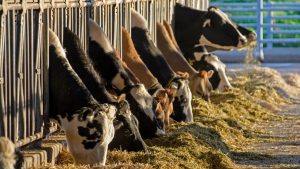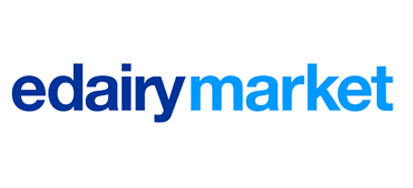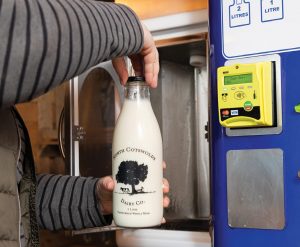Other products helped boost the U.S. dairy export scene as cheese exports surpassed 49,000 metric tons – up 7% year over year – for the second consecutive month, butter shipments rose 87%, and high prices of high-protein whey did not deter buyers as exports of the product jumped 29% in April.
In the cheese category, the gains were noted on a wide geographic basis due to strong demand, ample supply and a U.S. price advantage. Mexico remained the top volume buyer (up 1%, 157 metric tons), but other regions, including Japan (up 29%, 1,254 metric tons), Central America (up 31%, 1,142 metric tons), Australia (up 42%, 1,007 metric tons) and Southeast Asia (up 37%, up 648 metric tons), also supported the market.
U.S butter exports were driven by a tight EU supply and elevated prices both in the EU and New Zealand, allowing butter exports to remain on record pace for 2025. Additionally, high-protein whey sales impressed in April with volumes nearly doubling to Japan (up 83%, 892 metric tons) and reviving growth in India, Australia and Europe.
Another bright spot for the month was the rising value of dairy product exports. U.S. dairy export value grew 9% year over year and was up 12% to $3.07 billion year to date in April.
Dairy heifer, embryos regain ground in April
U.S. dairy heifer replacement exports bounced back with sales rising 75% from 52 animal units the month prior to 91 animal units in April. Contributing the most to April’s better performance were sales to the north. Canada increased dairy heifer replacement imports by 114%, from 36 to 77 animal units. Guinea was the other purchaser at 14 animal units, their first import of U.S. dairy heifer replacements in 2025. While April was an improvement from March’s poor exports, it still remains one of the lowest months on record. The last time U.S. dairy heifer replacement exports were this low was in March 2022.
In total, 459 animal units have been exported year to date.
U.S. dairy cattle embryos also showed a small gain in April. Sales increased 8% month over month, with April’s sales reaching 260 units, up 19 from the previous month but down from 655 units this time last year. Carrying the growth was Germany, increasing purchases of U.S. dairy cattle embryos by 233% from 46 to 153 units. The Netherlands, Switzerland and Australia constrained the month’s growth with each country limiting imports, down 23%, 50% and 53%, respectively.
Year-to-date sales of U.S. dairy cattle embryos were at 1,619 units in April.
U.S. hay exports limited to largest purchasers
Total sales of U.S. dairy-quality alfalfa hay exports fell 24% from March to April, with China posting the greatest decrease in purchases, down 39% to 50,397 metric tons. Other buyers who help shape the U.S. dairy-quality alfalfa hay export market also lowered the volume of forage purchased, including Japan down 25% to 29,635 metric tons and Saudi Arabia down 23% to 23,021 metric tons. The month was not a total flop as the United Arab Emirates imported a shockingly large volume of U.S. dairy-quality alfalfa hay in April. The country reported a 307% increase in purchases from 870 metric tons in March to 3,538 metric tons in April.
In total, month-over-month exports of U.S. dairy-quality alfalfa hay fell from 185,890 metric tons to 141,441 metric tons for a year-to-date total of 634,682 metric tons.
Similarly, other U.S. hay exports fell 14% to 81,673 metric tons in April. Major purchasers Japan, South Korea and Taiwan limited their imports of other U.S. hay, decreasing volume by 16%, 4% and 24%, respectively. As was the case with U.S. dairy-quality alfalfa hay, the United Arab Emirates also increased their purchases of other U.S. hay in April, reporting a 28% increase to 1,963 metric tons.
Year-to-date other U.S. hay exports are at 342,245 metric tons.
Trade balance remains in deficit
April’s U.S. agricultural trade balance deficit grew slightly compared to March with smaller values in both exports and imports. The Department of Commerce/Census Bureau estimated April U.S. agricultural trade exports at $14.407 billion and imports at $18.986 billion for a trade balance deficit of $4.579 billion.
The fiscal year-to-date (Oct. 1, 2024, to Sept. 30, 2025) balance is a deficit of $25.35 billion.
You can now read the most important #news on #eDairyNews #Whatsapp channels!!!
🇺🇸 eDairy News INGLÊS: https://whatsapp.com/channel/0029VaKsjzGDTkJyIN6hcP1K
























